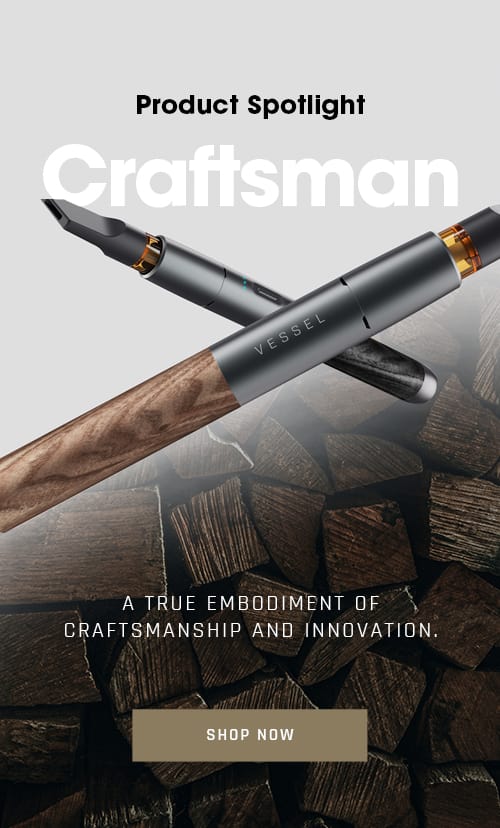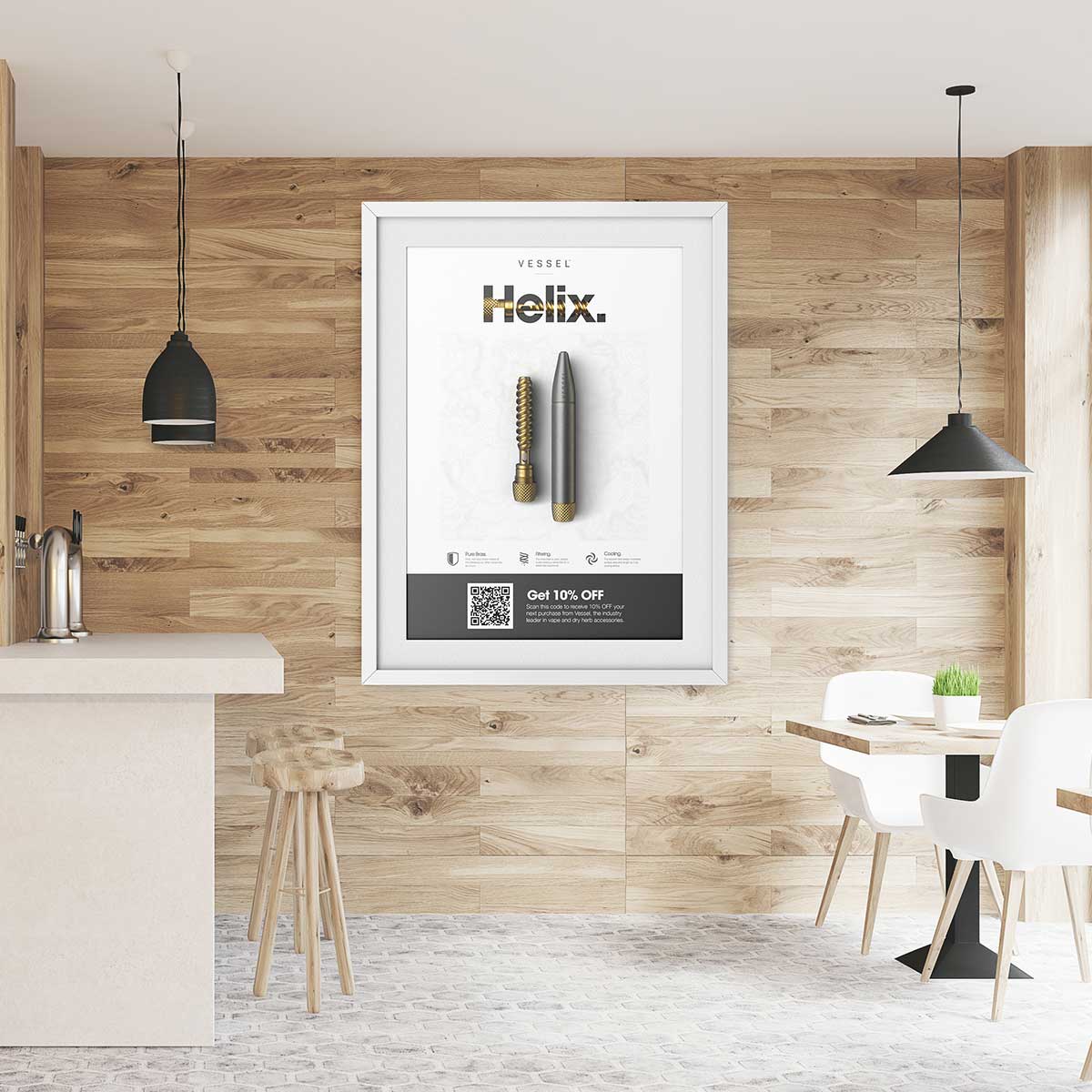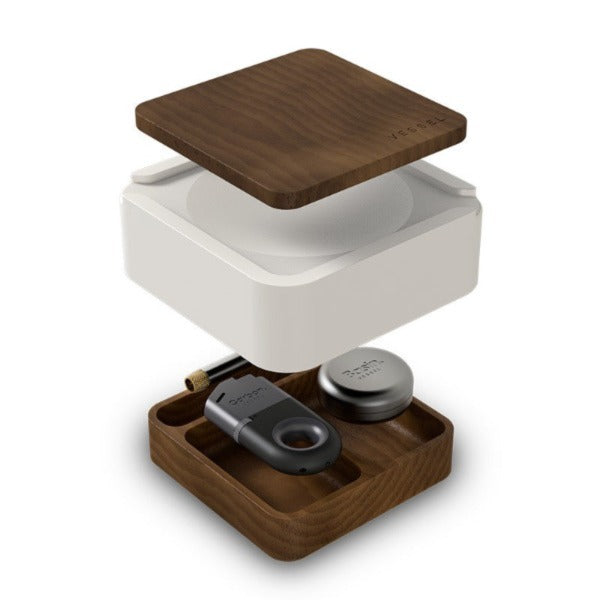A Review of Different Bong Materials
Bongs have a long history of being a stoner’s most trusty sidekick. Nowadays, bongs come in all sorts of shapes, sizes, colors, and even materials. Read on to learn more about the materials bongs are made out of, the pros and cons of each, and what they’re best used for.
Bong materials - what's the best?
Explore the table below to learn the basics about each type of bong material.
|
Type |
Pros |
Cons |
High |
Best For |
|
Glass |
Clean Taste, Aesthetics, Customizable |
Breakable, Not Travel-friendly |
Strongest high - less hazy, intense psychoactive effects |
Everyday, at-home use |
|
Acrylic |
Affordable, Durable, Lightweight |
Distorts taste |
Generally straight tube leads to big hits: strong high |
Cheapest option |
|
Ceramic |
Aesthetic, Clean Taste |
Breakable, Not Portable |
Generally smaller - less intense high |
Aesthetics- add a cool piece to your collection |
|
Silicone |
Portable, Lightweight, Durable |
Not Aesthetically Pleasing |
Generally smaller - less intense high |
Travel |
Glass bongs
Glass bongs are glass pipes that use water to filter smoke. They have four parts: a bowl, a chamber that holds water, a downstem that connects those two, and a mouthpiece.
Glass bongs are made from blown glass and therefore can be made into countless shapes, sizes, colors, and textures. This feature makes glass bongs extremely customizable: glass blowers often add features such as ice catchers and percolators to cool down smoke and enhance the smoking experience.
Pros and cons
Pros:
Cons:
How to clean
Though bongs might seem intimidating due to their size and unique shape, cleaning them is fairly straightforward. Remove the downstem and bowl from the bong and place them in a ziploc bag with a cleaning solution (either isopropyl alcohol, salt, and water or a bong cleaner will work best!). Fill your bong with this solution as well. Cover any openings and shake! Let the bong and its parts soak in the solution for as long as necessary, and rinse with warm water.
Acrylic bongs
Acrylic bongs are pipes made of acrylic that use water to filter smoke. They are lightweight, durable, and the most affordable water pipe option.
Acrylic bongs have the same four parts as a glass bong: a bowl (usually made of titanium), a downstem, a chamber, and a mouthpiece.
Pros and cons
Pros:
Cons:
How to clean
Because acrylic is fairly porous, using alcohol solution or a bong cleaner is not recommended. Using only hot water, take a toothbrush or pipe cleaner to your bong to clean it.
Ceramic bongs
Artsy and archaic: ceramic bongs have a long history of being a preferred smoking method for many. Ceramic bongs are pipes made of ceramic that filter smoke through water. Although rarer than glass bongs, they produce the same clean taste and are a bit more durable.
Aesthetic-wise, ceramic bongs are generally equal to glass bongs, though they certainly have different vibes.
This is where a lighter like Vessel’sCarbon comes in. Often crafted into a specific shape, ceramic bongs can be more effectively sparked up with a lighter like the Carbon, whose inverted flame can be used right side up or upside down.
Pros and cons
Pros:
Cons:
How to clean
Cleaning a ceramic bong follows a similar process to cleaning a glass bong. The only difference may lie in how your bong is glazed: with a ceramic bong that isn’t glazed, be more cautious about what solutions you allow to clean the outside of your bong. Otherwise a bong cleaner or isopropyl alcohol/salt solution will clean debris, gunk, and build-up off your pipe.
Silicone bongs
Silicone bongs are pipes made of silicone that use water to filter smoke. These bongs are typically made with low-toxicity materials, to ensure users aren’t breathing in noxious fumes when smoking. This material is also heat resistant.
Silicone bongs often have some parts that are made of glass, and come with a glass or titanium bowl.
Pros and cons
Pros:
Cons:
How to clean
Silicone bongs are potentially the easiest type of bong to clean. Remove any glass pieces, and toss the silicone parts into the dishwasher. Because these bongs are heat resistant, they’re safe to go into the dishwasher.
On the opposite end, try throwing your dirty silicone bong into the freezer for a few hours or overnight. Debris and resin will then pop right out.
Which is best?
Whether it’s glass, silicone, ceramic, or acrylic, different materials work well for different purposes.
While glass remains a fan favorite decades after glass bongs became popular, this bong is best for at-home use. Because of its neutral, flavor-free qualities, glass is perfect for everyday use.
While acrylic bongs don’t have that same neutral taste, they do have their own benefits. The most affordable of the bong options, they’re great in a pinch, and their lightweight durability makes them perfect for on-the-go smoking.
Ceramic bongs are great aesthetic pieces. Often shaped into something intricate, these are good collectors pieces, but might be a little cumbersome for everyday use.
Lastly, silicone bongs are the traveler’s best friend. Flexible and lightweight, yet sturdy and durable, these pieces are perfect for the clumsy smoker, the camping stoner, or the traveler who loves to cheef.
To sum it up
Bongs come in all sorts of shapes, sizes, and materials. Glass, silicone, acrylic, and ceramic each have their own unique features--and pros and cons.








Leave a comment (all fields required)